Perhaps you often see some Ming styles of Chinese female outfits with complicated names, such as: Duijin Shuling Pipa Xiu Duan Ao (对襟竖领琵琶袖短袄, short jacket with vertical lapels and pipa sleeves), Xiejin Shuling Long Ao (斜襟竖领长袄, long jacket with slanting lapels). But if you break these names down and analyze them, they are actually very easy to understand.
In this article, Zhua Xiao Ye will introduce to you the structure and naming rules of the Ming Chinese female outfits for women, and hope it will help you if you are particularly fond of the Ming-style Hanfu.
Step 1: Ling (领, collar)
Ling is the collar of the clothes. There are more kinds of collars in Hanfu, the most common one is the Jiaoling (交领, cross collar), which is characterized by Jiaoling Youren (交领右衽), that is, the left lapel covers the right lapel (when wearing, but if viewed from the front, that is the right lapel covers the left lapel), showing a "y" shape, which started from the Shang and Zhou period and was used until the Ming Dynasty.
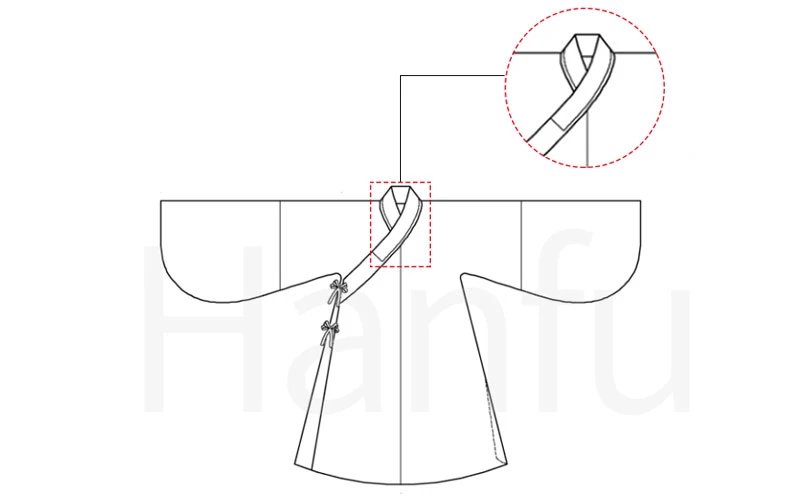
In addition to the cross collar, more types of collars were developed in the Ming Dynasty: Yuanling (圆领, round collar), Fangling (方领, square collar), Shuling (竖领, vertical collar/stand collar), Zhiling (直领, straight collar), and Yiling (义领, fake collar).
About common collar types of Ming style hanfu:
Step 2: Ren (衽)
Ren is the lapel of the clothes, where the clothes overlap. There are two main types of Ren in Ming Dynasty Chinese clothing.
- Duijin (对襟, vertical lapel): in common parlance, the clothes do not overlap, and the two lapels overlap into one line and are connected by metal buckles or ties.
- Xiejin (斜襟, oblique lapel): the two lapels are crossed and overlapped, which is the Jiaoling Youren wearing method.
Step 3: Xiu (袖, sleeves)
Ming-style tops have these main types of sleeves.
- Zhaixiu (窄袖, narrow sleeves): can be worn daily or as a Zhongyi (中衣).
- Zhixiu (直袖, straight sleeves).
- Pipa Xiu (琵琶袖, pipa sleeves): the most common sleeve type for Ming-style upper Ao (袄).
- Banxiu (半袖, half-sleeves): can be worn as Pi Ao (披袄), generally worn outside the short Ao.
- Wuxiu (无袖, sleeveless): mainly is the Bijia, usually worn outside the Shan Ao (衫袄).
- Daxiu/Guangxiu (大袖/广袖, large sleeves/wide sleeves): Commonly have Changkou and Shouqu two kinds.
Step 4: Qu (袪, cuffs)
The cuffs of the clothes are generally "Changkou (敞口, open sleeves)" and "Shouqu (收祛, close sleeves)", and "Shouqu" is divided into "Inward Shouqu" and "Outward Shouqu". Hanfu with wide sleeves (such as Changshan and Pifeng) are usually inward Shouqu or Changkou.
Step 5: Ao (袄, coat)
It can be divided into: "Duan Ao (短袄, short coat", "Bu Fu (补服, coat with Buzi)" and "Chang Ao (长袄, long Ao)"
- Duan Ao: a kind of cotton coat to keep out the cold, can be worn by both men and women. It was lined and long enough to reach above the crotch, and was generally worn outside. It was most popular during the Ming and Qing dynasties (of course, it is also popular now).
- Bu Fu: a kind of coat, the official clothes with Buzi decorated in the front and back between the Ming and Qing Dynasty.
- Chang Ao: from the Yuan and Ming dynasties, long to the knees.
Other
- Pifeng (披风): one of the outermost garments in the Ming style Hanfu, with a straight collar and vertical lapel, large sleeves, generally worn with a long coat.
- Piaodai (飘带): tied on the edge of the clothes of the long belt, initially developed from the ties on the clothes, and later slowly had a decorative role, and the position is more flexible.
- Doupeng (斗篷): a wide sleeveless outer garment draped over the shoulders to protect against the cold.
- Yunjian (云肩): initially only used to protect the collar and shoulder clean, and then gradually evolved into a decorative object.
Therefore, we can understand the Ming female Hanfu in this way: Ming top = collar type + lapel type + *sleeve type + coat type (the order is not fixed).
For example, Duijin Shuling Pipa Xiu Duan Ao (对襟竖领琵琶袖短袄, vertical collar short jacket with lapels and pipa sleeves). Duijin (lapels)= lapel type, Shuling (vertical collar) = collar type, Pipa Xiu (pipa sleeves)= sleeve type, Duan Ao (short jacket) = coat type.
More about Ming style Chinese Female Outfits:
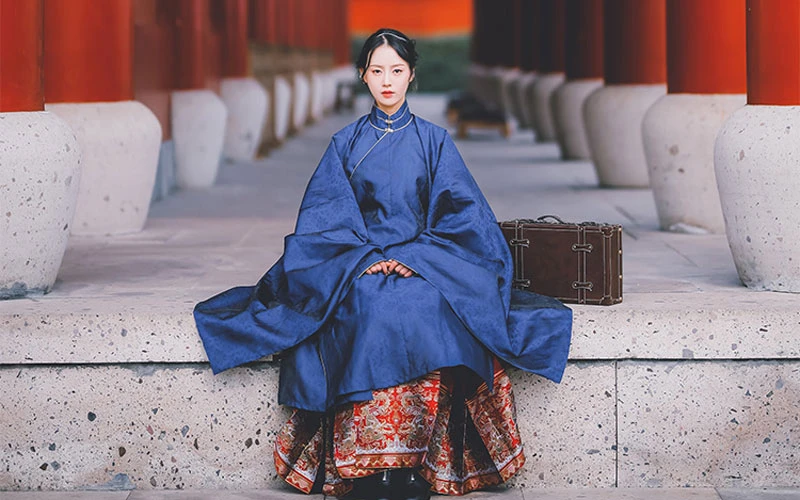
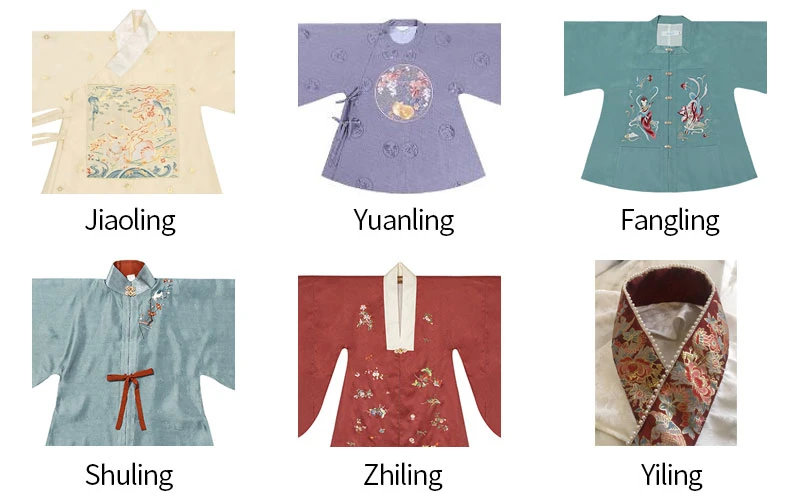
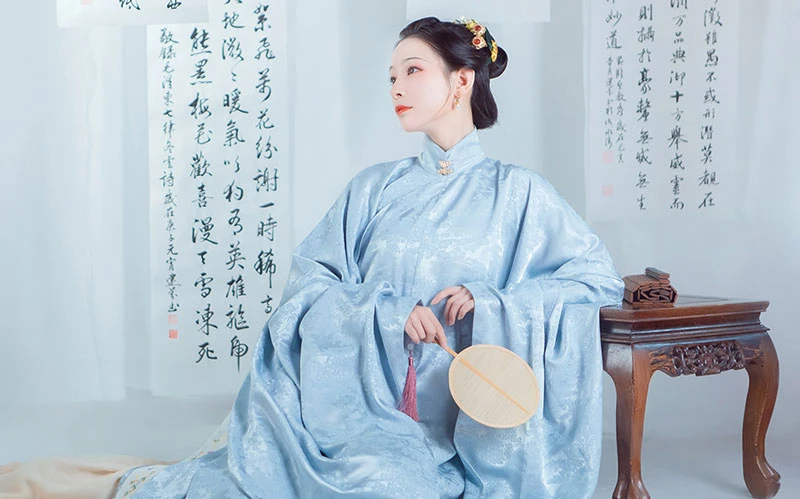
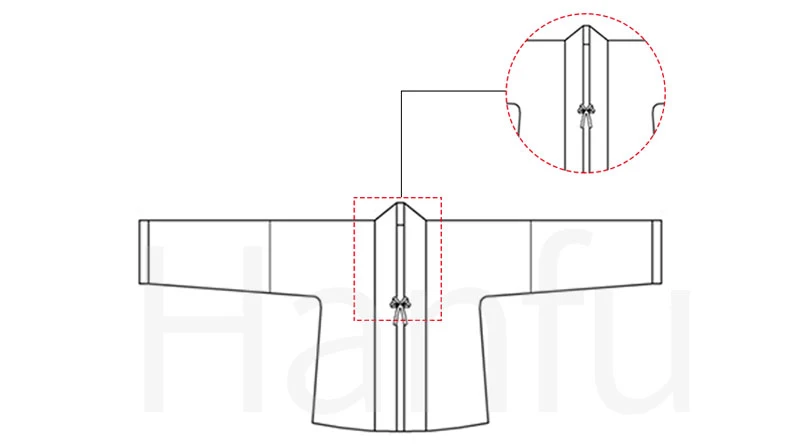
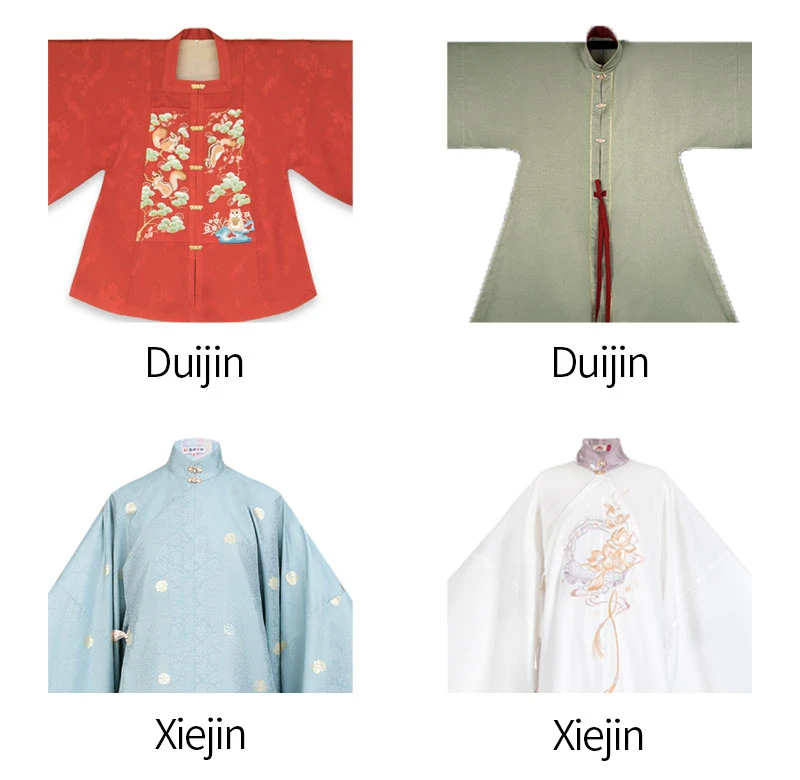
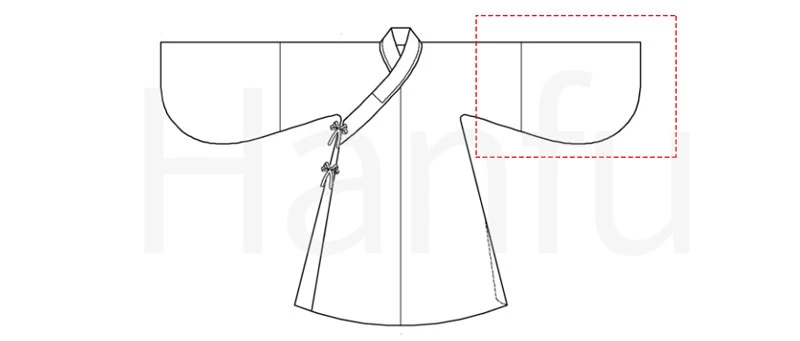
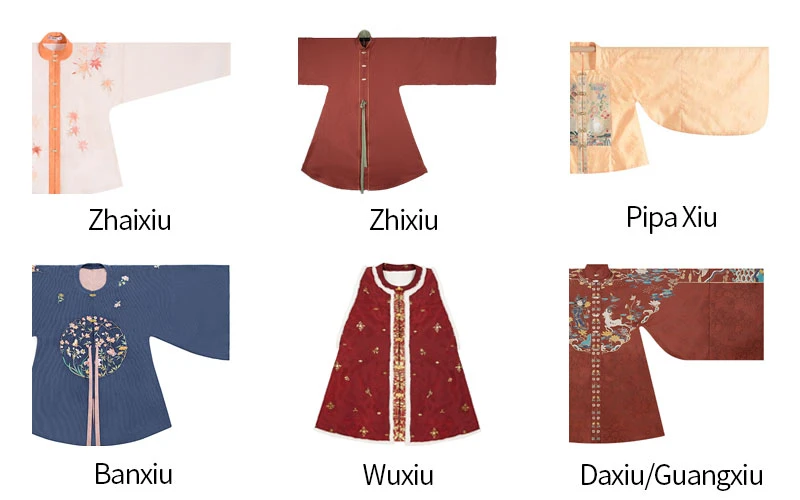
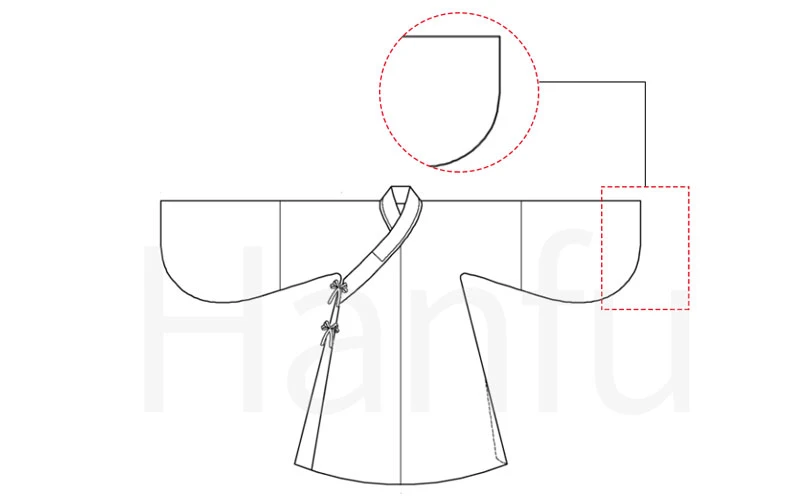
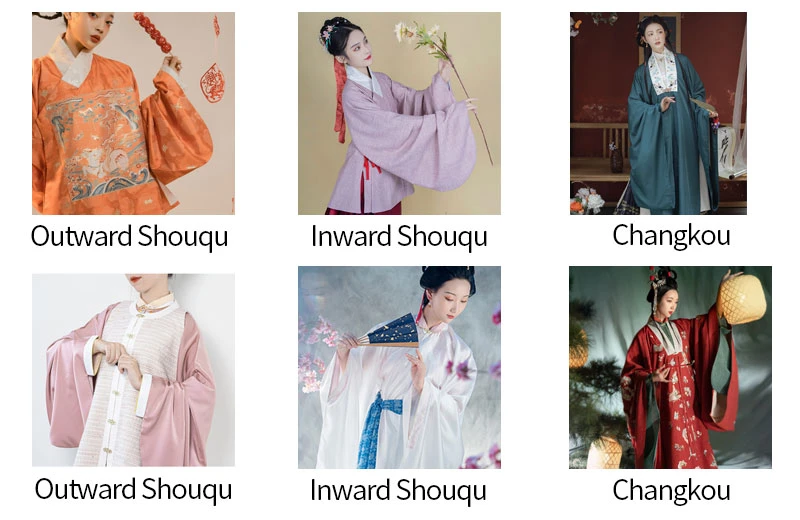
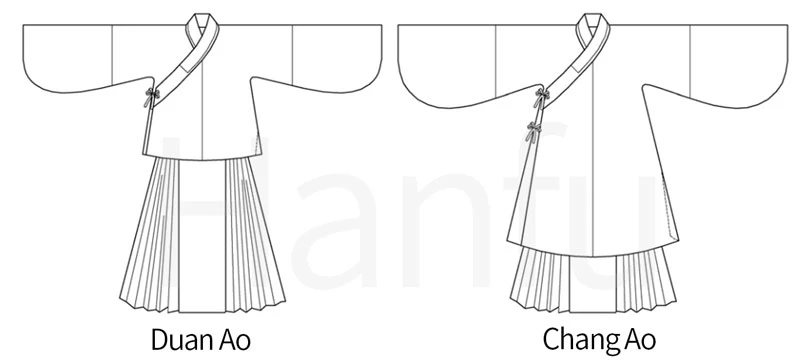
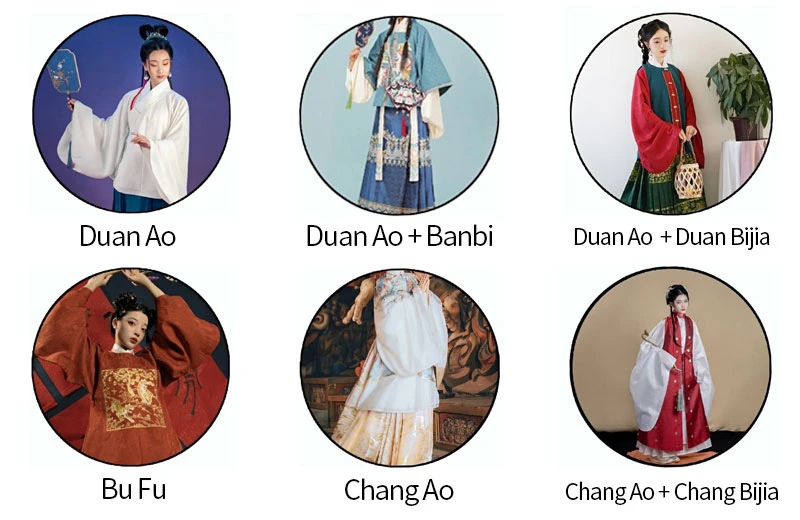
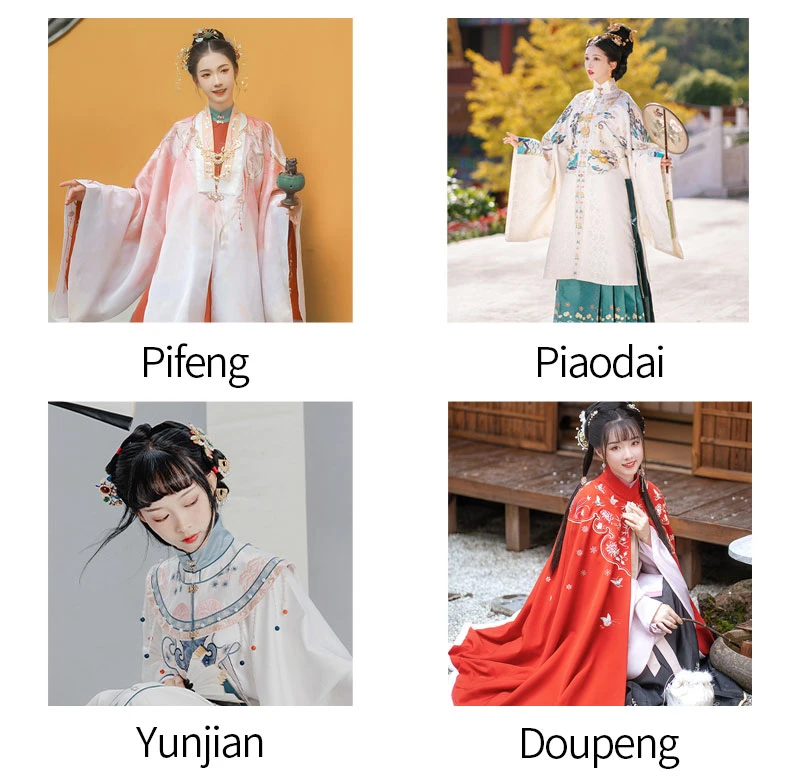
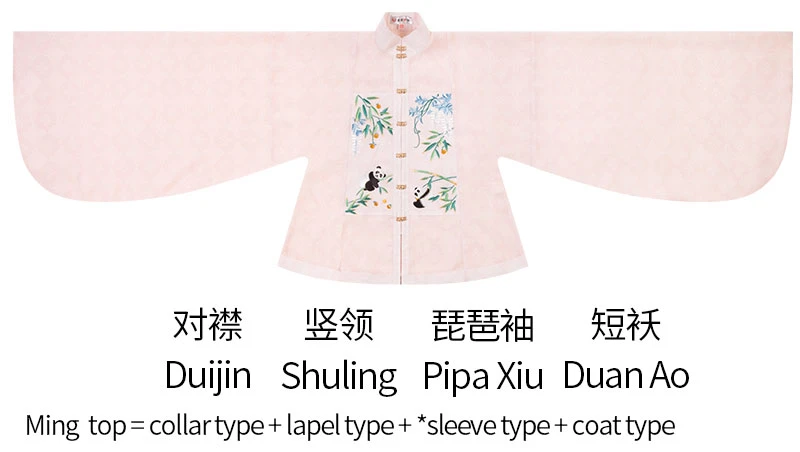
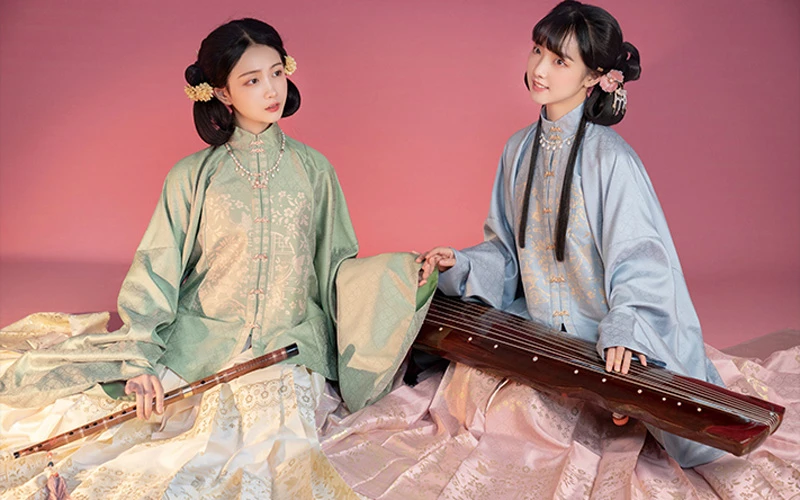
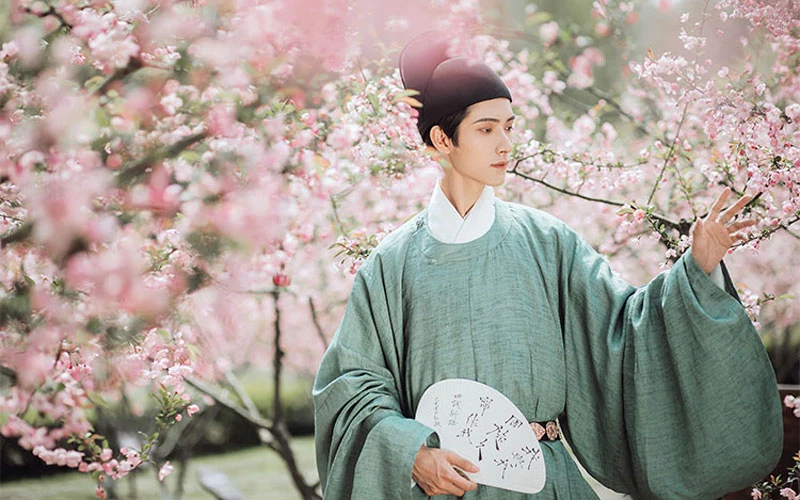

Very useful article. I wanted to like it but I think they changed the layout and can't find the like button... so I'll leave a comment instead
The details are very clear when explaining it
The content is very clearly explained and very helpful👍